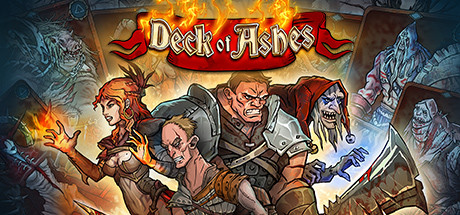Slay the Spire just got a whole lot darker
Type: Singleplayer
Genre: Roguelite, Deckbuilding,
Strategy
Developer: AYGames
Publisher: Buka Entertainment,
WhisperGames
Release date: 9 Jun, 2020


Deckbuilding roguelites are a rather new concept in gaming. But since Slay the Spire’s successful early access release in 2017, there’s been several developers who have been eager to make their own take on the formula. Deck of Ashes is among these.
In Deck of Ashes you’re playing as one of four brigands, someone who’s done terrible deeds, and who in their lust for power unleashed a terrible curse upon the world. And now they’ve set out to do something about it.
Deck of Ashes is a deckbuilding roguelite, meaning that you’ll start the game with a deck of cards, that you’ll expand and improve upon through the course of the game. Once you beat the final boss, or die on your way there, you’ll start over from scratch, trying to make a new deck of cards that can face the challenges you’ll meet along the way.
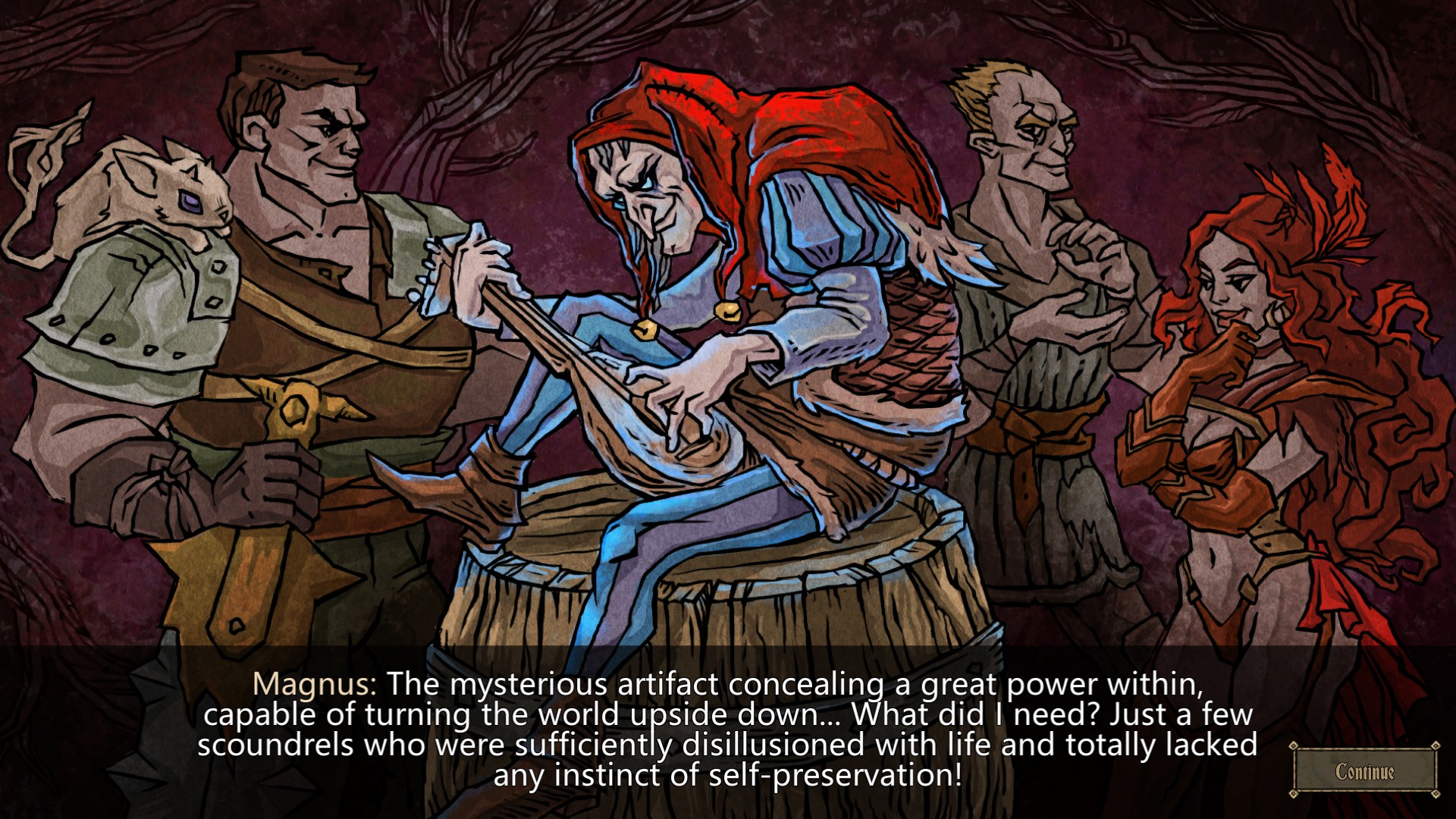
Story & Setting
Four people, known as the Outcasts, have unleashed a terrible curse upon the world. The Ash curse.
These four people all had their reasons to hate the world. Great injustices had been committed to them all, and they had taken revenge on the world several times over. They had murdered and pillaged, and were among the most feared people of the land. But they were still mortal humans, limited in power. And thus they sought a great artifact, the Ash Box.
But when reaching the resting place of the Ash Box, its owner, Lady Death, was willing to give it to them without a fight. The outcasts were not good people though, and the idea of sharing power did not sit well with them, so they fought over the box. In the chaos, the seemingly weakest of the bunch, grabbed the box. It slipped out of his hands, and broke as it hit the ground. And so a great curse was released, corrupting the lands and its inhabitants, but most of all, it corrupted the outcasts.
That is how the story starts. You’re playing as one of these outcasts, who all have their own reasons to try and deal with the Ash curse. They’re guided on their journey by an old monk, who seem to know more than he’s willing to say.
The story is not the strongest part of Deck of Ashes, but then again, it rarely is with roguelites. But there’s enough substance here to at least give you some context for what’s going on, and a motivation to push forward. Every character also has their own story, so there’s replay value here, beyond just seeing how far you can get.
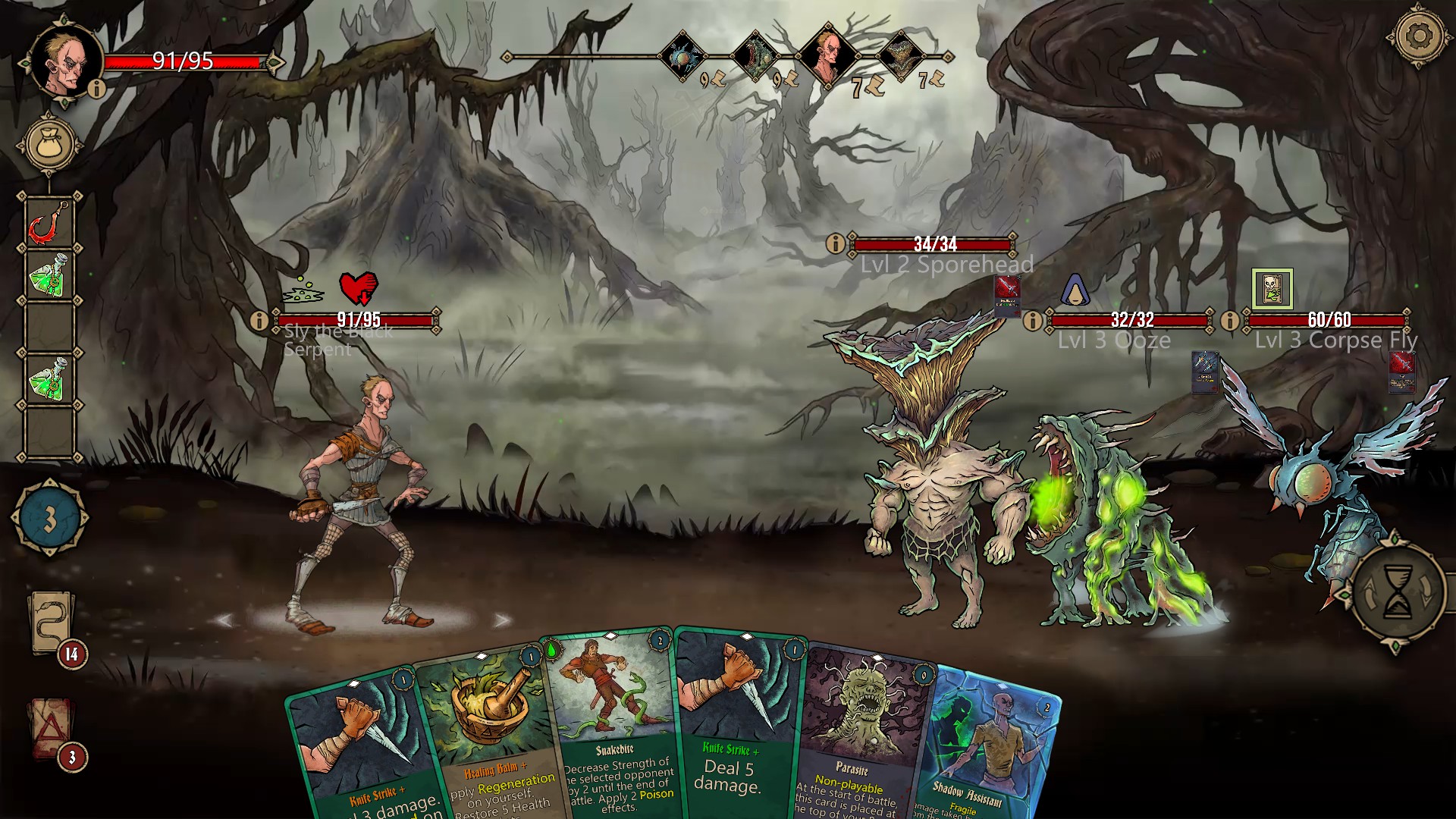
Presentation
The art in Deck of Ashes is one of its most distinct parts. It has a rough, kind of dirty look to it, not too dissimilar to Darkest Dungeon, which fits its dark fantasy setting. Unlike Darkest Dungeon this game has no issues with generous use of brighter colours, particularly red.
The highlight of the art has to be the games monster design. There’s some rather unsettling and grotesque looking creatures in this game, and there are quite a few of them. Not everything looks quite as good as the monsters though, some of the poses for the human characters seem a bit unnatural and stiff. Some of the font choice is also not great, and the text can stick out like a sore thumb at times. Worst of all is the text that indicates that you’ve beaten a campaign with one character, which looks like it could be placeholder text that was left in.
The game has fitting music. It feels dark and ominous, with combat having a more desperate tone to it. This is not the kind of music you listen to on its own, but it fits well with the tone the game tries to set. Sound effects are also fitting, and have the right amount of weight behind them. What does not sound quite as good is the voice acting. it ranges from okay to pretty bad.
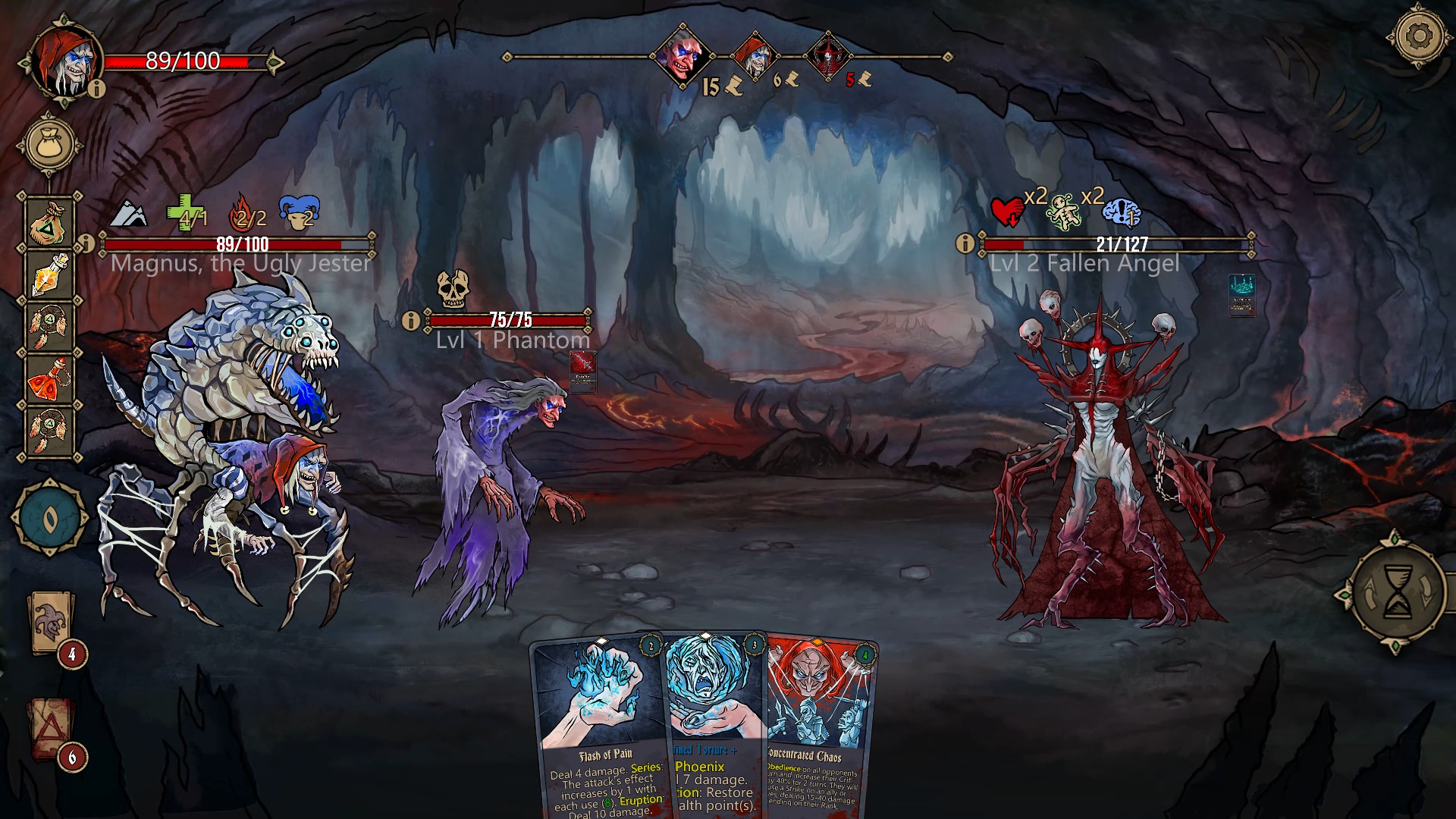
Gameplay
Deck of Ashes has a few different game modes, but the basics gameplay is the same. You play as one of the four characters, who all have their own strengths and weaknesses, and you’re trying to grow in power, and improve your deck.
The deck building part is, much like in any other deckbuilding game, an important part of the game. As you progress through the game, you can add and remove cards from your deck, and in order to succeed, you need to build a deck with cards that work well together. The combinations you can make are not overly elaborate, but you still need to find a balance in your deck, and make one that’s flexible enough to deal with all enemies you might end up facing, yet also have cards that are able to build upon each other. You also need to be able to find a good deck size, that suits the deck you’re building. Once your deck runs out of cards, you need to sacrifice some health to add cards that you’ve played back into your deck, and so having a larger deck makes it possible to go longer without having to sacrifice life, but it does on the flipside make the deck less consistent. You also need to make sure that you’ll actually be able to play the cards that you draw. During combat you have a limited amount of “mana” each turn (default is 5, but this can be modified), and if all you have are big 3-4 mana cards, that makes it harder to play more than one per turn, and you’ll also end up wasting a bit of mana each turn. But if all you have are 1-2 mana cards, you’ll lack the ones that have a big impact on the board, and you’ll also go through your deck faster.
Depending on your choice when you’re starting a new game, you’ll either start with a simple pre-made deck of cards, or you’ll draft a new deck. Drafting gives you three randomly selected cards that you can choose from. Pick one, and then move on to a new set of three, until you have a deck of 10 cards. The draft mode is likely to produce a better deck than the default one, as long as you go in with a plan, and know how the cards interact, but for a newcomer, the default deck is good enough.
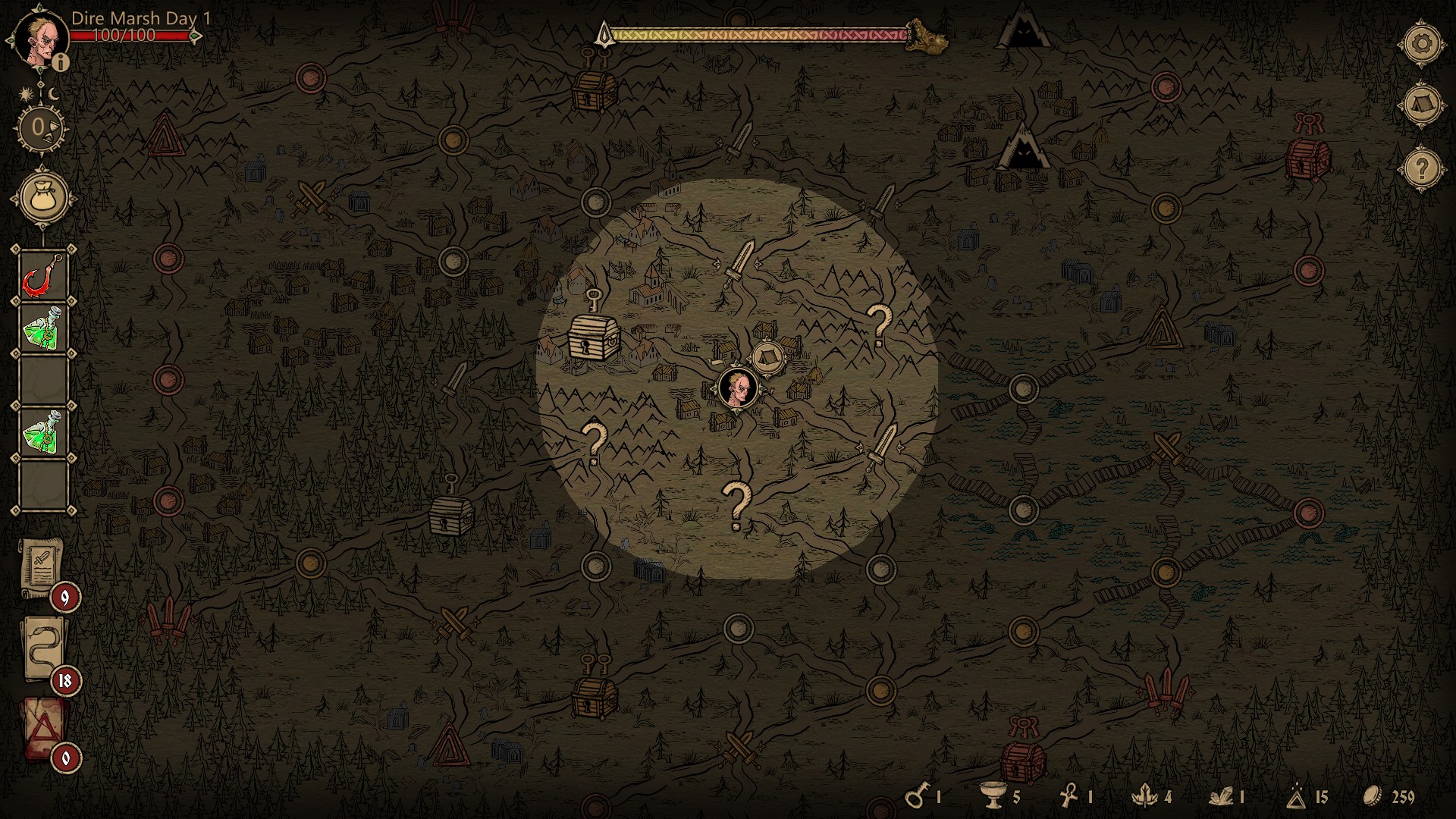
When you’re not in combat, you’ll be making your way around a map, that’s made up of a web of nodes. Each node has an icon indicating what they are. In the normal campaign, your goal is to try and collect as many resources as possible, in a limited number of turns, before the big boss of the region shows up and you have to fight it. Resources can then be spent on permanent (for that playthrough) upgrades and new cards. The further you’re able to get from your home base, the better the rewards, but you’ll also face more dangerous opponents. And the most dangerous opponents of them all (other than the bosses), as well as the greatest rewards, are in the dungeons that are scattered around the map. Exploring the map can get a bit tedious at points though, particularly if you’re already happy with your deck, and have the upgrades that you need, as you’ll still be forced to spend time wandering around, waiting for the region’s boss to appear
Once you either win or die you’ll be given some resources that can be used to unlock new cards and perks that you can get in all future playthroughs with a specific character, as well as some very powerful perks that are only active for your next playthrough, which gives you an incentive to keep on playing. A complete playthrough will net you at least a few card unlocks.
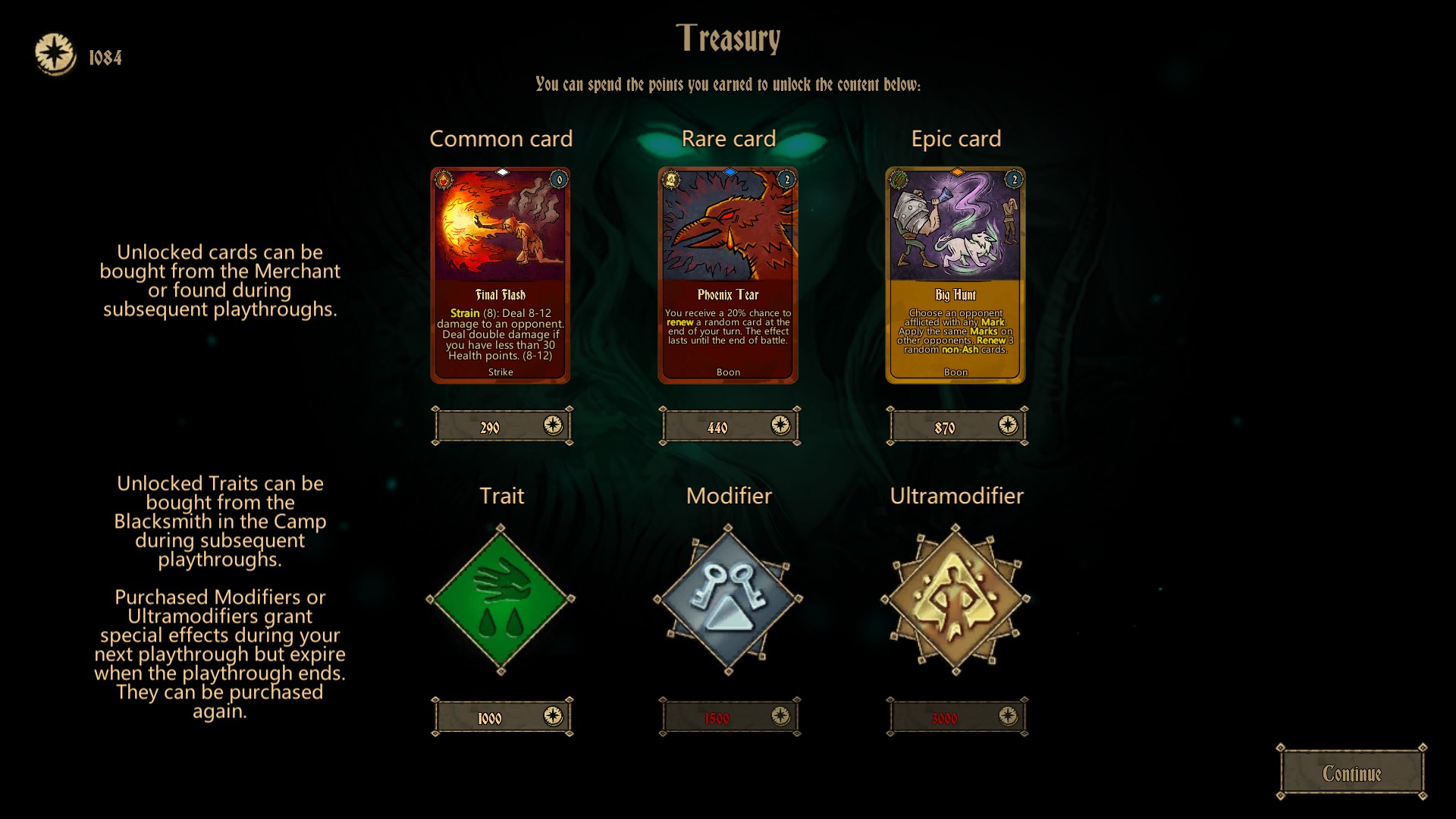
There are, as stated before, 4 characters, with their own advantages and disadvantages. The fire mage enjoys burning the enemy down with medium priced spells, and is willing to hurt herself in the process if it makes her win faster. She also has many cards that make her stronger if they’re in the pile of played cards.
The rogue has many cheap cards and excel at quickly going through his deck, as well as avoiding damage through stealth, which makes him untargetable by the enemy for a turn.
The warrior is the heavy hitter of the bunch, and has many powerful but expensive cards, as well as the ability to mark an enemy, giving certain effects.
And finally, the jester is the most unique character of the group, having the ability to curse enemies, lowering their stats, summon a ghost to help him, and turn enemies against each other.
The 4 characters do in other words have radically different playstyles, and each character seem to have at least a handful of viable strategies, giving the game a lot of replay value. What might hurt the games replay value though is how it feels slower and a bit more cumbersome than its main competitors. Combat could be spread up a bit if you did not have to discard and confirm that you want to discard cards at the end of every turn, and loading times before every combat encounter can be surprisingly long, and for some reason the first combat of each playthrough seem to be exceptionally long, for seemingly no reason.
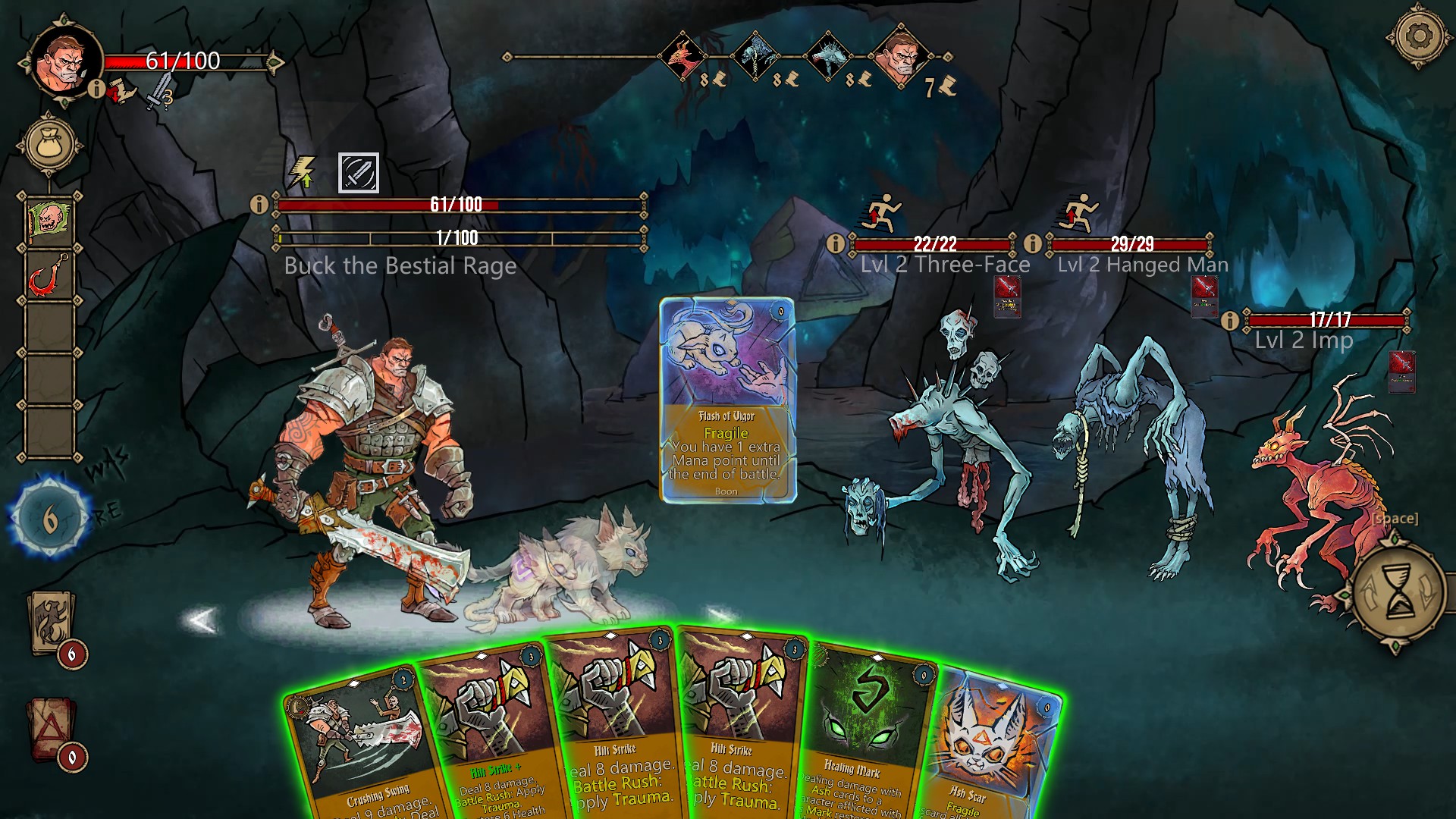
Closing Thoughts
Deck of Ashes is a solid deckbuilding roguelite, with a few rough edges. it is clearly inspired by the excellent Slay the Spire, and when compared to Slay the Spire, it comes up a bit short in a few regards, particularly pacing and balance, but on its own, it’s still a good game, that does a few things that sets it apart.
Personally I really liked the art style, which I thought was, for the most part, excellent. The varied character classes, and the plethora of different strategies that they offer also give the game a lot of replay value. The game is also not as punishing as I went in expecting it to be, which depending on what you want out of a game like this can be a good or a bad thing. In fact, for a roguelite, this game is surprisingly forgiving. That’s not to say that the game is a cakewalk, just that it’s easier to recover from mistakes.
While I would not say that this is the best deck building roguelite on the market, it’s still a very solid game, and fans of the genre should absolutely check it out. And if the developers can tighten up the game balance a bit, and polish the rough edges, this could very well be a must play.

